PHOTOGRAPHY JANE SMITH
Jane Smith’s sheep station, located east of Broken Hill, New South Wales.
Sign up to our mailing list for the best stories delivered to your inbox.
Jane Smith (aka The Shady Baker) shares a traditional family recipe that's perfect for gifts and gatherings.
WORDS AND PHOTOGRAPHY JANE SMITH
Aunty Jean was born Annie Jean Edson in 1925 in Broken Hill, New South Wales, and grew up on Stirling Vale station, west of Ivanhoe. As the eldest daughter in the family, Jean was taught by her mother to cook on the AGA in the homestead kitchen, from the age of seven.
In 1948 Jean married Alan Harris and lived her married life at Melton Grove station, also in the Ivanhoe district, where they raised their four children: Jock, Sandra, Margaret and Alison.
Jean was a founding member, and later a life member, of the Murulla Country Women’s Association (CWA) branch, established in 1962 and later part of the Mildura/Millewa group. Murulla is a First Nations word for ‘meeting place’. Jean and her fellow members worked tirelessly to raise funds for charities in Pooncarie and Mildura. The CWA created connections for women living remotely on the stations at a time when social outings were few and far between and female company was scarce.
Jean kept her own mob of black sheep that had been cut out of the main mob of Merino sheep, to prevent colour contamination in the wool clip. These rather lucky black sheep provided coloured wool for the spinners and weavers of the district.
She supplied the district with fruit cakes for every occasion, including weddings, anniversaries and birthdays. Jean baked my parents’ wedding cake. When planning any event, it went without saying that Jean would supply the cake. All of her cooking was done in her AGA stove that would run for 12 months of the year. No doubt the summer days would have been long and hot in her small yet well-organised station kitchen. Jean outsourced the decorating of her special-occasion cakes to trusted cake decorators she had connections with in Mildura. No doubt she kept them busy.
Traditional plum puddings were another of her specialities. When I was a child the puddings seemed huge, hanging in their calico coverings in my grandmother’s dark station storeroom, waiting to be boiled up for the Christmas table. Jean supplied enormous puddings to the local Christmas tree celebrations at Darnick, where slices of pudding would be served with generous amounts of homemade custard.
Family members recall Jean arriving at the old community hall with a big tin esky that had a leather strap around it, just in case the lid fell off and the precious contents came adrift on the bumpy outback roads. It is only now that I fully appreciate the work and ingredients that went into these festive creations, not to mention the transportation and storage issues.
I’ve made some small adjustments to the original recipe, to make it a little easier for the modern cook to follow. Sadly, Jean is no longer with us but the memories of her baking will stay in our community forever. I hope you might share a slice of this cake with your family this Christmas.
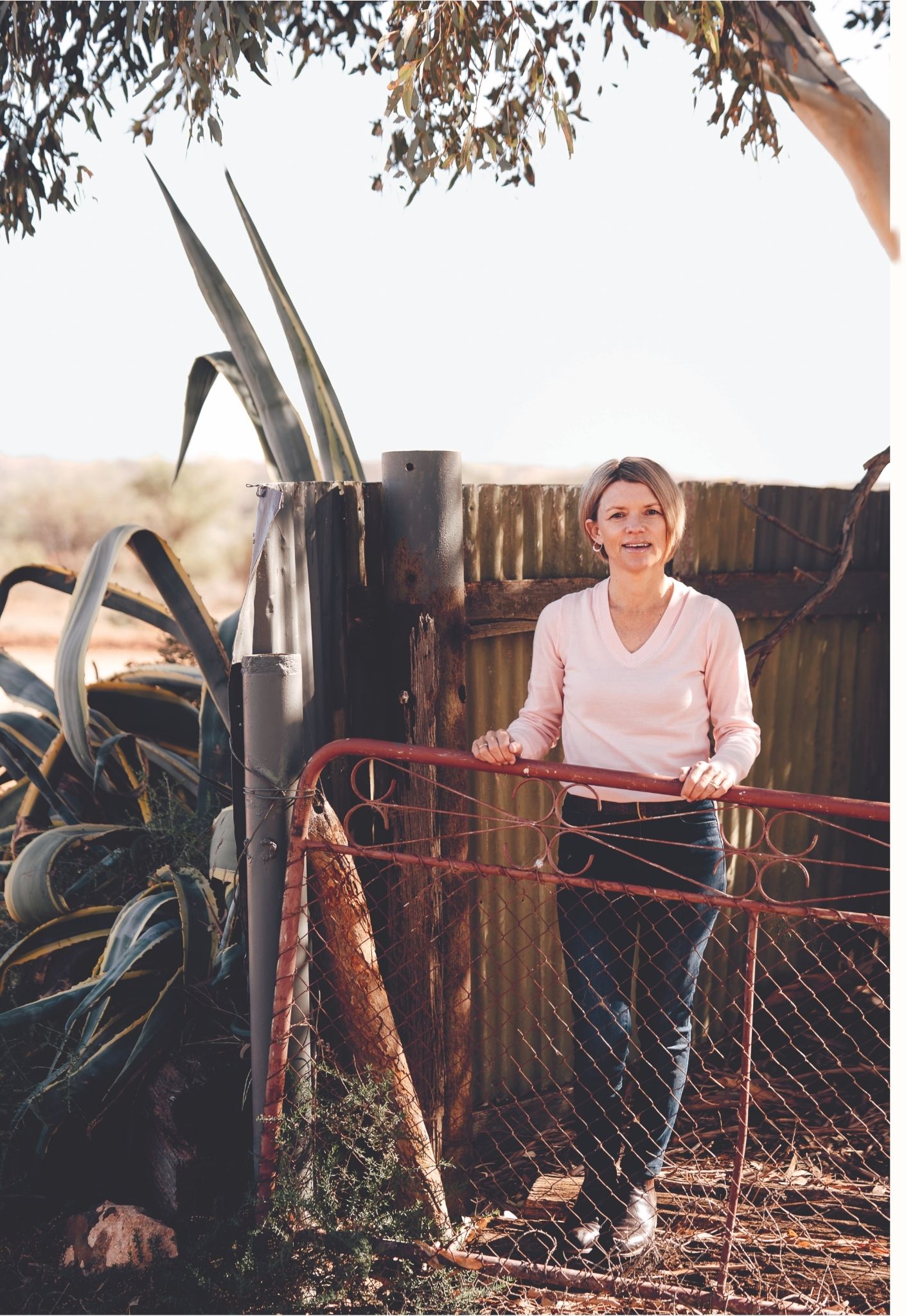
PHOTOGRAPHY SOPHIE WAKEFIELD
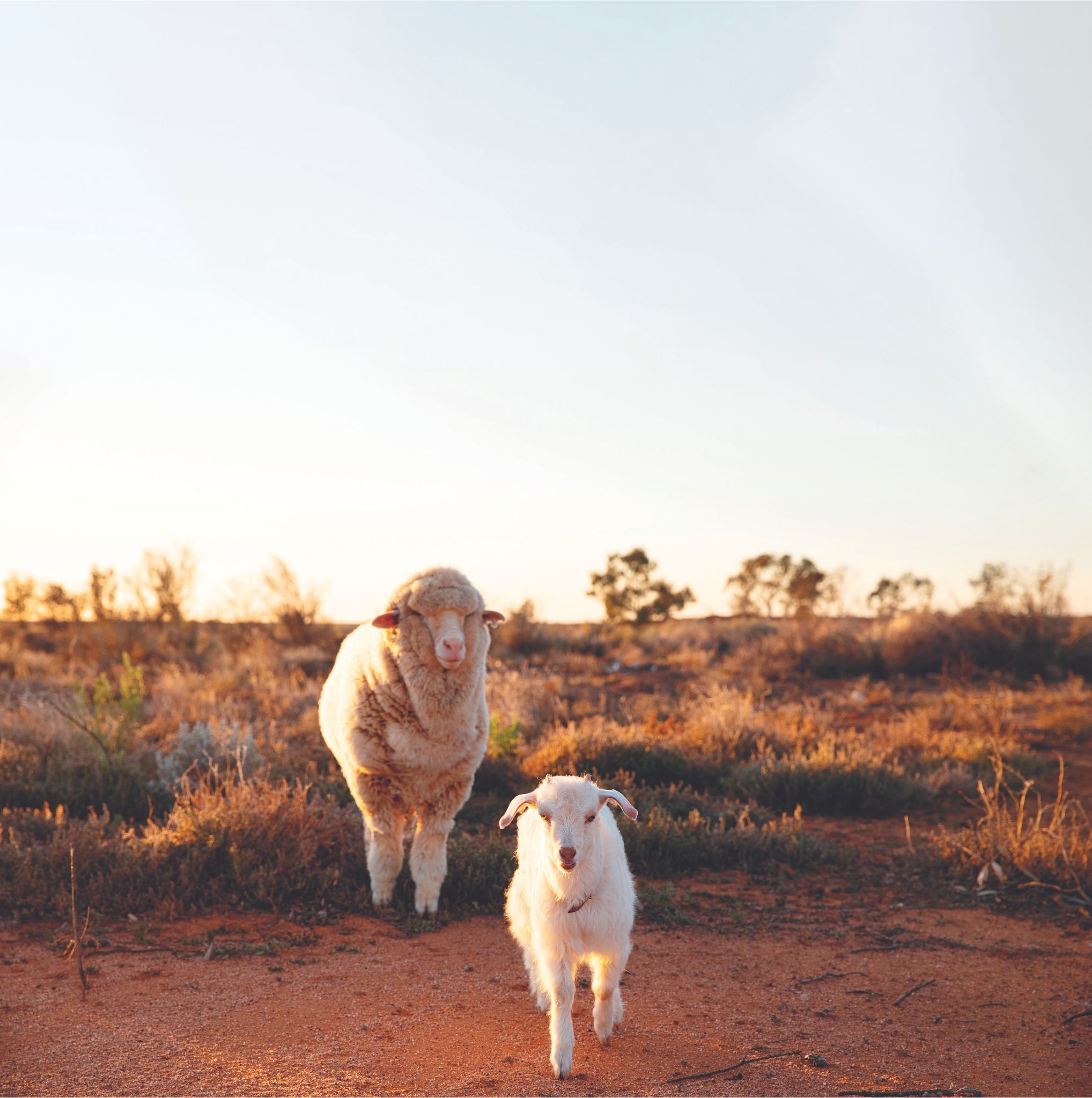
PHOTOGRAPHY JANE SMITH
A Merino sheep with a feral rangeland goat kid at Jane’s property.
CHRISTMAS FRUIT CAKE
5 cups (680g) mixed dried fruit (sultanas, currants and raisins)
¼ cup (60ml) brandy
230g butter, softened to room temperature
1 cup (220g) white sugar
5 eggs
2 tablespoons dark jam, such as fig or plum
2 cups (300g) plain flour
½ cup (70g) whole blanched almonds for decoration, optional
You will need a 20cm square x 8cm deep cake tin or a 23cm diameter x 8cm deep round cake tin for this cake.
1. Stir the dried fruit and brandy together in a ceramic bowl. Cover and set aside to soak at least overnight or up to several weeks.
2. Preheat the oven to 150°C. Line the cake tin with baking or parchment paper, using a double layer on the base and the sides. Set aside.
3. Using electric beaters or by hand, beat the butter and sugar in a large bowl until light and fluffy. Add the eggs, one at a time, beating well after each addition. Add the jam and dried fruit, including any brandy that remains with the fruit. Sift the flour into the mixture and stir well.
4. Spoon the mixture into the tin and level the top. Decorate with almonds, if using, pressing them lightly into the surface of the batter. Holding the tin with both hands, tap it firmly but carefully on the worktop to get rid of any pockets of air.
5. Bake for 2 1/2 to 3 hours until a skewer inserted into the centre of the cake comes out clean. Cover the tin with foil after 1 1/2 to 2 hours to prevent the top getting too brown and hard.
6. Leave the cake in the tin, covered with a double layer of clean tea towels, until the next day.
Note: Cakes can be made 3–4 months ahead and stored in an airtight container.
Thank you to the Harris family — Jock and Kerry Harris, Alison Harris, Trish Palmer and Liz Trabilsie — for allowing us to share this recipe and assisting with the story.
For more of The Shady Baker, tune into this episode of Graziher’s Life on the Land podcast. Jane Smith chats to us about her sheep station, east of Broken Hill, and cooking for her family.
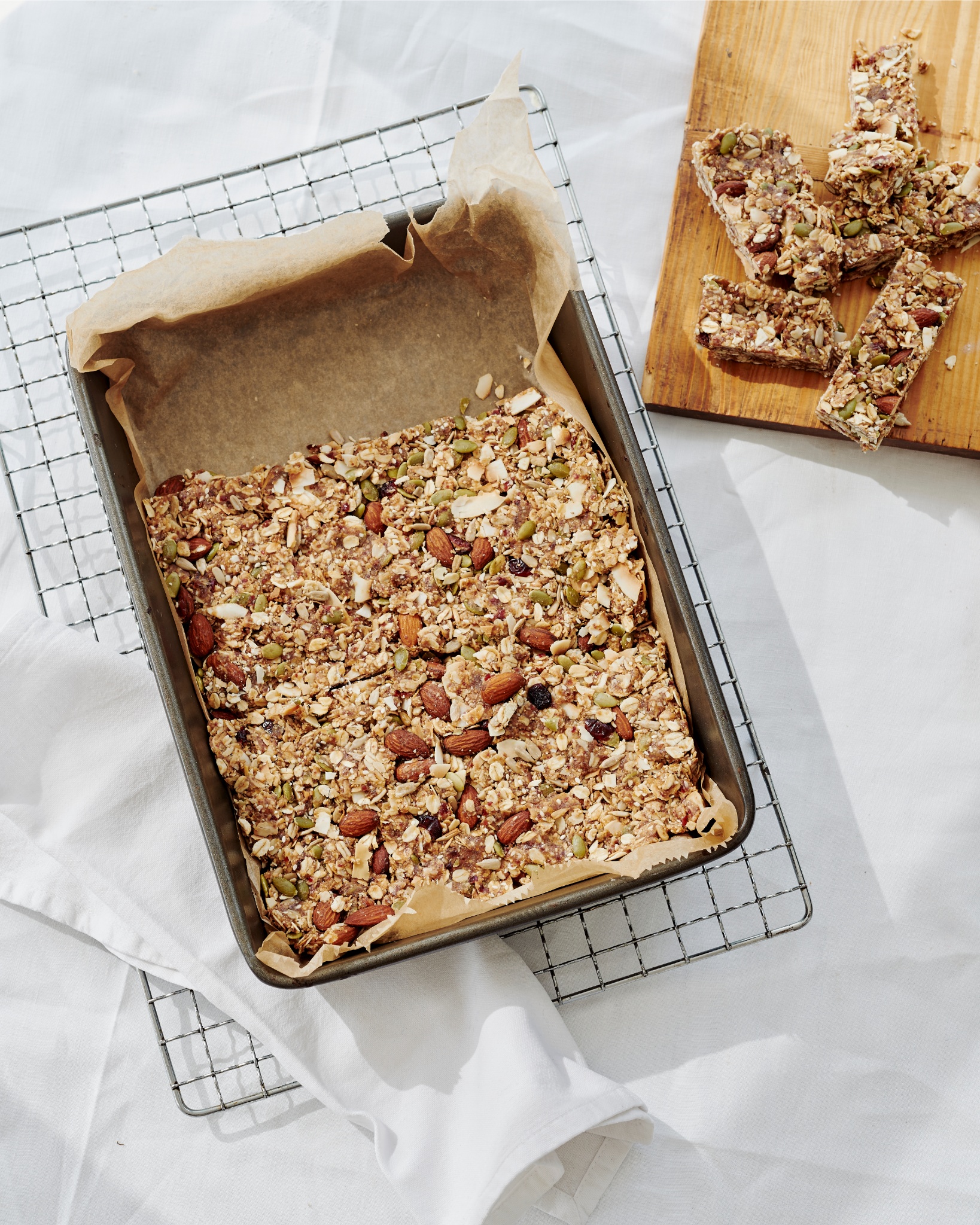
Plus, meringues and a light and fluffy tiramisu.
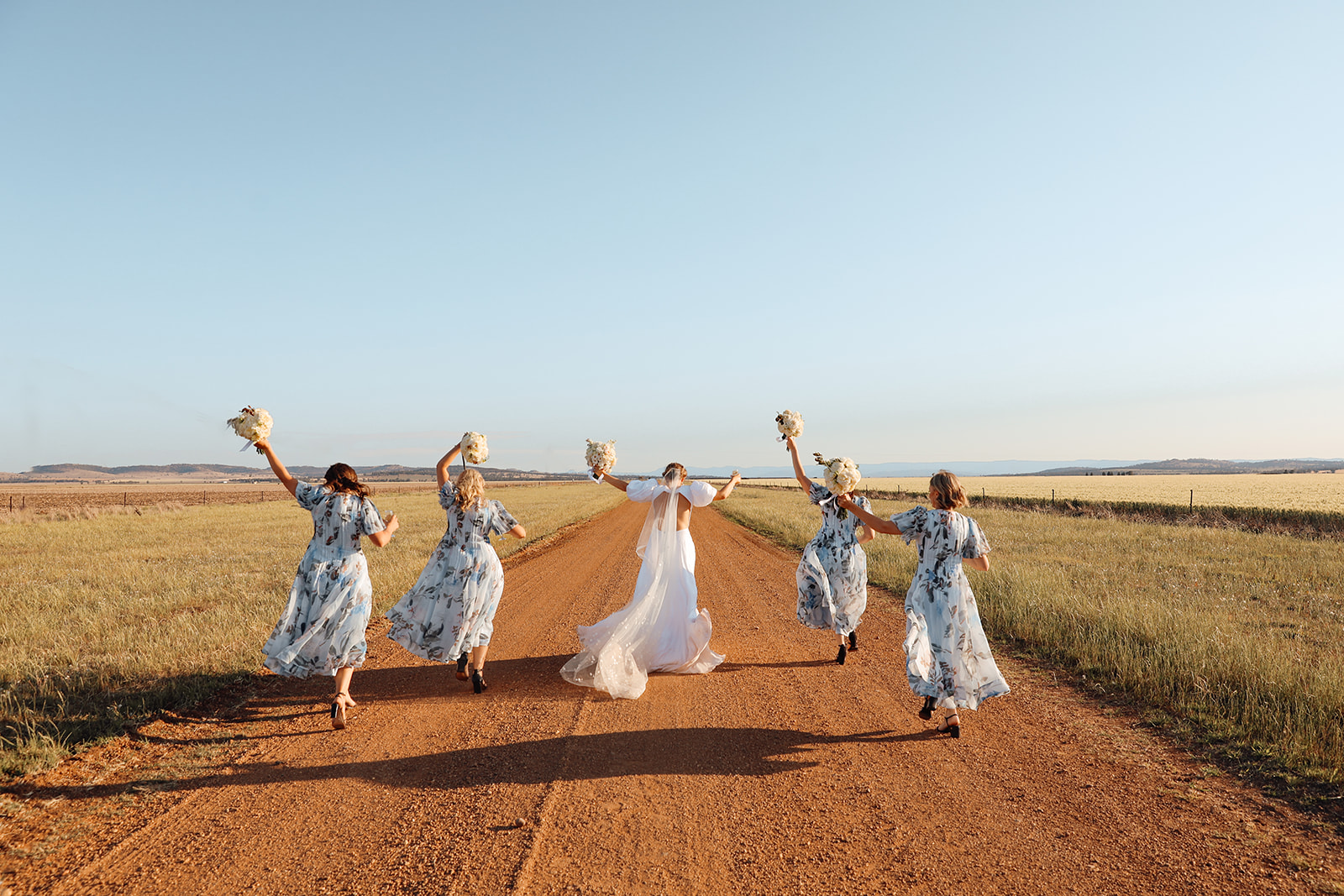
A wayward veil and a surprise birthday celebration kept things lighthearted in Spring Ridge, New South Wales.
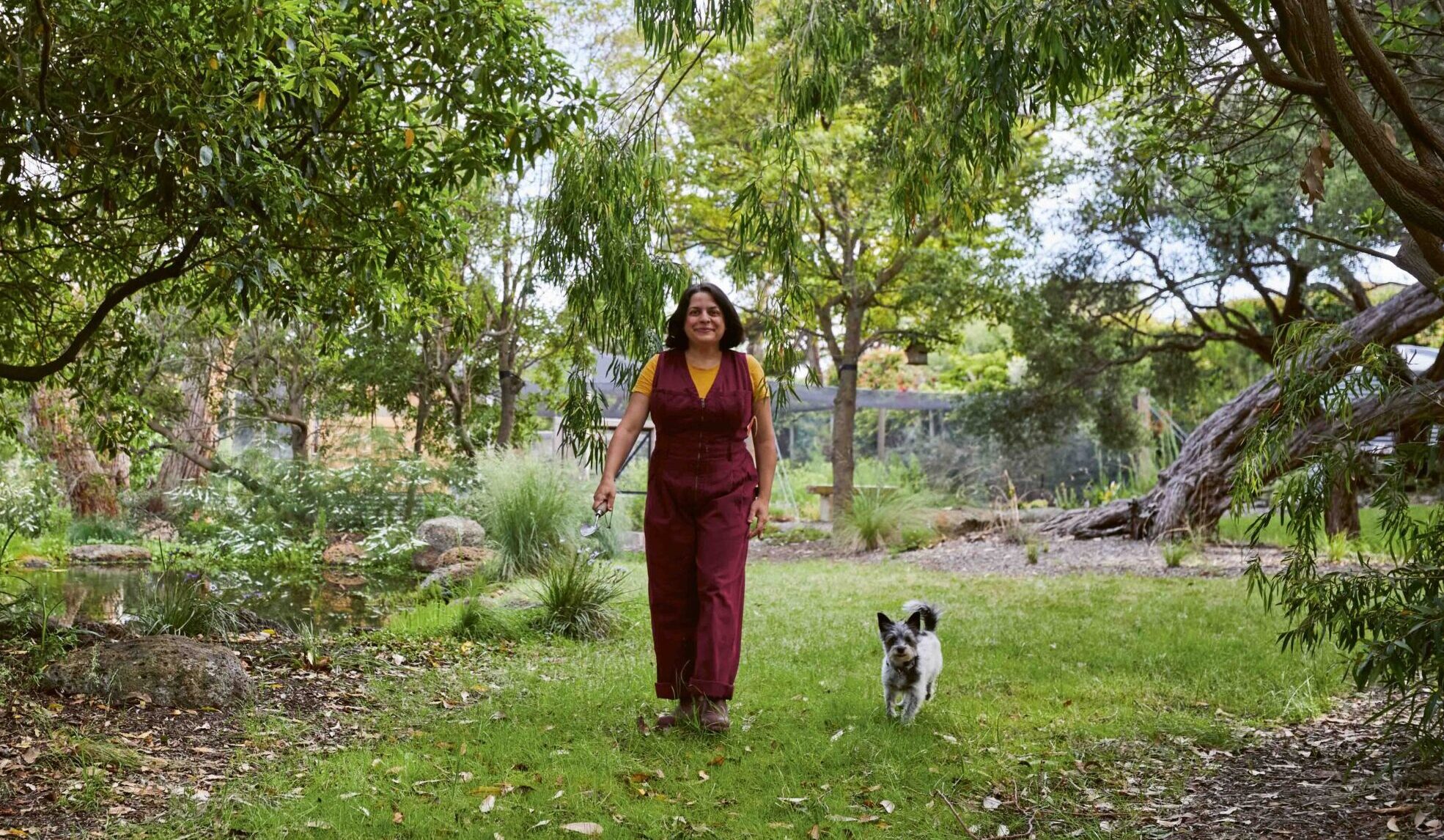
The native and exotic species that will boost the number of Australian bees in your backyard.